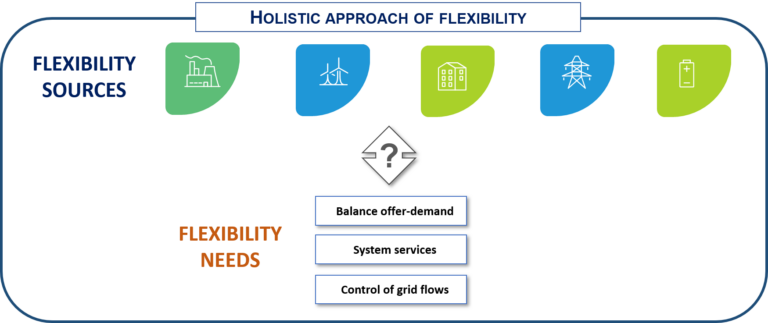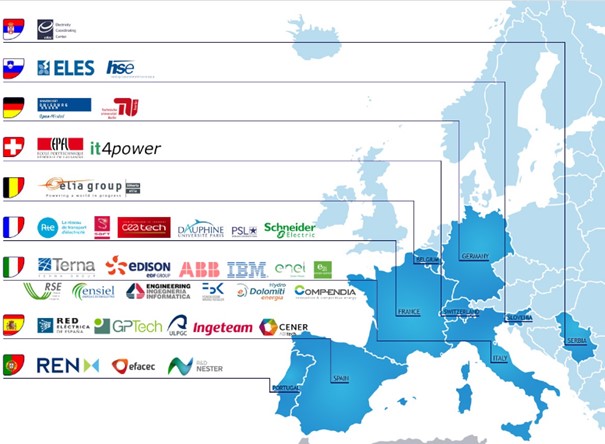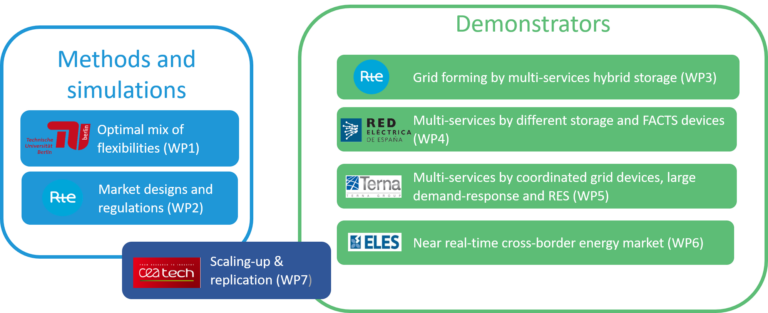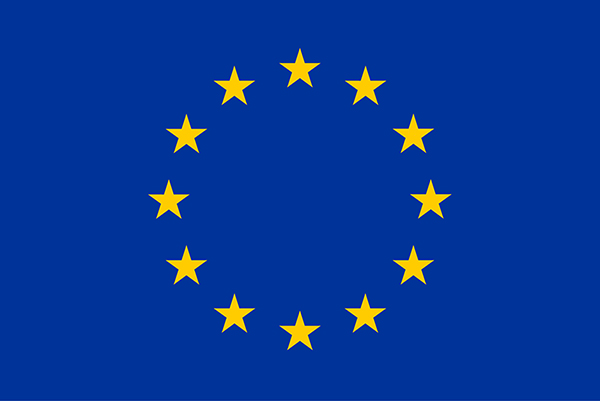The European power system is facing new challenges, and in particular the increasing penetration of Renewable Energy Sources. But in parallel, new solutions are also emerging such as smarter controls or large-scale storage:
OSMOSE develops an approach to capture the synergies across different needs and sources of flexibilities.

![]() Osmose approach to flexiblity
Osmose approach to flexiblity
Flexibility is understood as a power system’s ability to cope with variability and uncertainty in demand, generation and grid, over different timescales.The project aims for the development of flexibilities that can be used for a better integration of renewable energies. A holistic approach is adopted, considring at the same time:
- the increased need of flexibilities in the system (mainly improved balance of supply and demand in electricity markets, provision of existing and future system services and allowance of a dynamic control of electricity flows)
- and the sources of flexibilities (RES, demand-response, grid and new storages).
It addresses all system requirements to capture the synergies proposed by the different solutions in order to avoid stand-alone solutions that might be less efficient in terms of overall efficiency. Four demonstrations led by Transmission System Operators (RTE, REE, TERNA and ELES) address different flexibility solutions and services:
- Grid-connected grid-forming
- New hybrid and modular storage solution with the capability to offer multiple system services
- Near real time cross border exchanges between Italy and Slovenia
- A smart energy management system including Dynamic Thermal Rating, demand response and RES in the South of Italy
![]() Key project figures
Key project figures
| BUDGET | PARTNERS | PROJECT TEAM | PROJECT PERIOD |
 |
 |
 |
 |
| 28 million € | 33 partners from 9 countries | An equivalent of 60 people full time | A 4 years project (2018-2021) |
![]() The consortium is led by RTE and is composed of 33 partners
The consortium is led by RTE and is composed of 33 partners

![]() Work plan
Work plan
The project is structured in 7 technical work packages. WP1 et WP2 respectively address the development of long-term flexibility scenarios and of new market designs. WP3 to WP6 cover the four demonstrations, while WP7 deal with the scaling up and replication of demonstration results.

- WP1 – Optimal Mix of flexibilities
- WP2 – Market designs and regulations allowing the optimal development of flexibilities with high shares of RES generation
- WP3 – Grid forming for the synchronisation of large power systems by multi-service hybrid storage
- WP4 – Multiple services provided by the coordinated control of different storage and FACTS devices
- WP5 – Multiple services provided by grid devices, large demand-response and RES generation coordinated in a smart management system
- WP6 – Near real-time cross-border energy market
- WP7 – Scaling up and replication
![]() OSMOSE Impacts
OSMOSE Impacts




